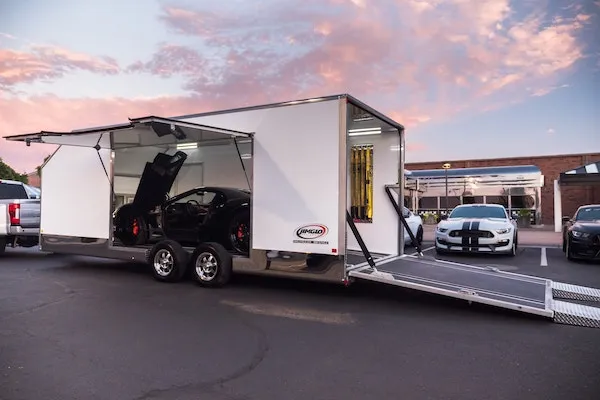Shipping cars is now easier than ever. Nowadays, exporting your car has many advantages, and it can be done almost hassle-free. However, some elements, such as weather, have a major impact on transportation. Do you know how weather conditions affect shipping car prices? Shipping costs certainly vary significantly with the seasons. You can prevent yourself from going bankrupt during the busiest season of the year by keeping a close eye on things.
This blog post explains how changing seasons affect the cost of shipping cars and offers some tips to avoid breaking the bank when shipping a car.
How do the Seasons Impact the Cost of Auto Shipping?
The cost of car delivery varies according to the service you choose. It is very important to understand the factors that go into the final auto shipping quote. Auto transport prices are determined by a number of factors. Costs are affected by various factors such as type of transportation, distance traveled, location, customization, and make and model of vehicle.
For example: without considering potential unexpected costs from winter weather that can add hundreds of extra, the expected cost of a typical car trip in the winter is $1,300 compared to $1,450 in the summer. Despite the seemingly high base shipment costs, summer is the safest and most reliable time to ship a car.
But supply and demand are an important issue. The cost of delivering an automobile is determined by changes in supply and demand, which can vary significantly over months. The number of people who need auto transport at any given time greatly affects the cost of auto transport. Just consider the season during which most people choose to move. Since it is summer, demand increases and prices change accordingly.
While this is an overly simplistic approach, it does a pretty good job of reflecting the inevitable swings in spending. As one might guess, there are a few exceptions to this rule. For example, on some routes, contrary to what you might expect, winter prices go up rather than down.
Summer are Tended to be more Expensive for Shipping a Car:
Some claim that the shipping business pays more in winter than in summer. However, most transport companies charge higher prices in summer, according to a Consumer Affairs study. The analysis suggests that shipping costs could increase by $200 to $300 throughout the summer. There are several reasons for these results:
Auto transport businesses see an increase in business in summer. Majority of people like to travel in summer. It is also the best time to travel with children. Prices rise when demand exceeds supply. Traffic has increased on major routes like New York, Los Angeles, Miami and Chicago.
Enclosed auto transport is recommended to protect vehicles from winter snow. Most car owners are not eligible for this premium service, which is the transport system. Those unable to pay for this service may decide to hold off until the weather improves. As a result, fewer people ship in the winter than in the summer. Additionally, cars can travel freely throughout the summer despite high temperatures.
On the other hand, activities are less active during the winter months. Vehicle transport companies are forced to reduce their rates due to low demand.
It is important to note that not all businesses experience price differences. Small and startup businesses usually take advantage of this opportunity to grow their clientele. As a result, during the summer, they cannot raise prices substantially.
How Weather Affects Timelines for Auto Shipping:
Winter car transport is more time-consuming than summer car transport for several reasons. Following are few reasons.
- In July, a carrier can safely drive 60-65 mph on open highways. In a Minnesota blizzard, icy, snow-covered roads can reduce speeds to 40 mph or less.
- Winter driving time is limited to shorter daylight hours. For example, on long summer days, a truck leaving Seattle at sunrise can travel 600 miles. In the deep winter months, the same vehicle can only travel 400-500 miles before the driver has to turn around at dusk.
- In winter, many rural or mountain roads become impassable. Car haulers, for example, find it too dangerous to drive through the Upper Midwest or the High Rockies between November and March. To avoid congested highways, businesses must redirect traffic through longer routes.
- Winter causes driver shortages as some employees choose to take time off rather than work in inclement weather. Transit times could be faster if fewer drivers were available. In summer, a vehicle may ship next day, but in winter, it may take more than five days.
- Summer shipping, on the other hand, benefits from direct routing possibilities, a greater number of drivers, greater daily driving range, and safer highways. In summer, there is less delay and downtime and faster vehicle movement.
Conclusion:
In summary, when shipping vehicles for large distances, seasonal weather patterns have a direct impact on travel times and preparation requirements. Due to road hazards in winters, one should drive more carefully and anticipate possible difficulties on the way. There is an added risk of overheating and sun damage while traveling in the summer months.
Contact Best Way Auto Transport now for individual support and adaptive preparation based on the upcoming seasonal weather. Their shipping experts help customers compare carriers to get the best possible deals and delivery schedules. They even offer shipping date recommendations to help you avoid paying exorbitant summer charges. For a personal consultation on winter or summer vehicle deliveries, call them at (XXX) XXX-XXXX.







